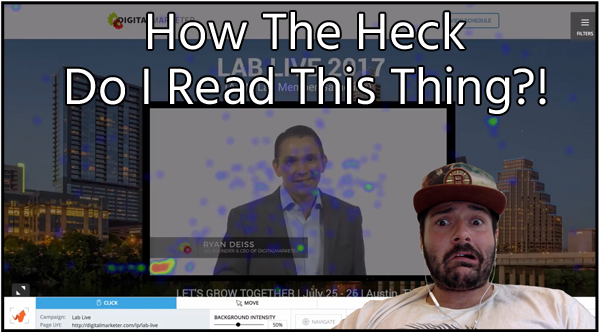If you’re going to write blog content, then you want your target audience to see it. However, writing a blog and posting it on your website probably won’t get you all of the views and clicks that you want.
Why?
Because you must optimize your blog content each step of the way: from before putting pen to paper (or fingers to keyboard), to actually writing the post, to posting it on the site using SEO tactics.
Having optimized blog content means you’ll get more visits to your site as users will enjoy what they read and share it on social forums. This for you most likely means increase in sales and brand notoriety, proving just how important blog optimization really can be.
The term “blog optimization” can be a bit overwhelming for some, so in this post we break down best practices and how you can get more views on your content. This Post breaks it in 3 parts:
Contents
Before You Write:
How to find content your target market wants to read
Writing Your Content:
How to write strong copy
What is SEO copywriting?
How to use appropriate keywords
Posting Your Content:
What is SEO?
How to easily technically optimize your blog content (no programming knowledge required)
Final SEO pieces
If you follow along and make sure you keep blog optimization tactics in mind each step of the way, your blog’s traffic will increase and you’ll begin to create a following of readers who come back for more posts.
This builds brand loyalty, which is the best kind of sales any company can have, because someone else is promoting your brand for you…for free! It all starts with writing great content.
Before You Write
Here’s something so many people forget:
If you don’t write content people want to read, no tricks can make it go viral.
People want to read newsworthy stories, not content that has been talked about to death. So how can you know what the trends are and anticipate future ones?
How to Find Content your Target Market Wants to Read
By now you should fully understand your target market – who they are (demographics), what networks they’re on, and how best to approach them. You should have identified what voice or tone to write in and how to layout appealing content.
It’s important to find out what your target market is reading and anticipate what they will want to read, and then write about that. There are two great tools (among others) to help you anticipate trends in your industry:
BuzzSumo, a free tool that can be upgraded via paid account, allows you to analyze trends and how content performs for certain keywords or competitors. The site is also incredibly easy to use. Once you go to the site, you’ll see a search bar where you can type in your industry’s keyword.
Say you’re in video production, you may be writing about video marketing trends in order to capture the attention of marketers who want to make videos. All you need to do is type in “video marketing” into the search bar and you’ll see previous articles that did really well online.
In red you’ll see which posts had large amounts of shares online. You can also filter by date, infographic, guest posts, etc.
What do you do with this information?
After you put in filters for what type of content you want to see (depending on if you’re making in infographic, company interview, or just straight-forward blog post), take a look at what type of content did really well online. That is what you are going to want to mimic and improve.
You don’t want to copy it exactly, but you want to use it to make an even better idea.
For example, if you see “7 Ways to Use Video to Drive Traffic and Conversions”, then there is a demand for posts on how video can increase sales.
A good topic would then be the ROI of video marketing.
Google Trends is another way to anticipate good blog topics. The homepage shows users the most current trending and also allows users to search.
Staying with the “video marketing” search, you can also see what are similar topics people search for in relation to this keyword.
Digging in, these can be great keywords to use to shape your post idea. Since YouTube marketing is such a big and rising term, a post on “ROI of YouTube Marketing” is almost guaranteed to give you a lot of hits.
Want to know 100% that you’re going to have an awesome blog?
Create 5-10 blog ideas and have people around you (co-workers, friends, etc.) vote on the best idea. Have them tell you 2-3 ideas that they would really want to read or click on; this will help you figure out the most “exciting” posts.
Now that you have narrowed down what to write about, it’s time to get typing.

Writing Your Content
Obviously you’ll want to do some research into your topic and get all of your facts together. Having your team help can be great, since you’ll want to add photos, stats, and extra material into your posts.
Once you have collected all of the background material and the piece has begun to take shape, it’s time to start writing.
How to Write Strong Copy
What’s really important when it comes to copywriting is you want to make every word count. First outline the piece – what is your main point?
What are your arguments that showcase that point? Make sure you have a “thesis” or a main argument and then back up those arguments with concrete examples.
When you’re writing (and more importantly when you’re editing), you want to cut any fluff. Anything that does not add to your blog, take it out. Additionally, it’s important not to stray off topic, which is why outlines are key.
Remember, you’re writing about one specific topic and you should keep your target market in mind. What voice do they respond to? How can you make the content more appealing to them?
What is SEO Copywriting?
SEO copywriting is a new term that has been popping up lately. This keyword simple refers to writing copy that ranks well with search engines (aka shows up high on Google when someone searches that keyword).
SEO copywriting is writing strong content that your user wants to read and keeping in mind how search engines rank content. For a great overview on the basics of SEO copywriting, Heather Lloyd-Martin, CEO of SuccessWorks has a nice introduction to this concept on their site SEOCopyWriting.com:
How to Use Appropriate Keywords
There was an important change with Google’s algorithm where they weeded out “thin content” and essentially had it rank lower. This “thin content” included posts that stuffed keywords in:
Search engines will rank you lower if you put in way too many keywords. What you can do, however, is put in a few keywords and add in long-tail keywords as well.
Long-tail keywords are phrases that individuals are searching for on Google. So instead of “make dinner”, people search “how to make dinner fast”.
Those are the types of keywords you can begin to include in your content. They will also be key for the more technical side of your posts, which we will go over in the next section.
One way to find long-tail keywords is my simply using Google. When you type in “make dinner”, see what automatically pops up:
This is Google’s auto complete, which can help you find which keywords you want to target. If you hit enter and scroll to the bottom of the page, you’ll also see “Searches related to make dinner”, which give you even more options for long-tail keywords:
Ideally you choose one long-tail keyword and a few shorter keywords that you will use in your piece. The key here is:
Don’t stuff in the keywords so they seem out of place. They should flow naturally and seem like they are part of the article. If you add keywords in too much, Google will rank you lower, so be careful. Just add them in 1-2 times per article.
Once you have the piece ready, it’s time to begin the technical side of posting. Again, no coding is required, it’s just important to know best practices when posting a blog.
Posting Your Content
Once you have a blog post that you like, has been edited, and is ready to go, it’s time to get it online! The important thing to remember is that you want people to easily find your content.
You’ve already done a lot of the work by writing unique content that people want to read and utilizing SEO copywriting, but there is more to do to optimize your blog.
What is SEO?
First we can take a step back and remember what SEO is at its core. The concept is explained really well by SearchEngineLand, who breaks down the basics in a video:
As you can see, SEO starts with having strong content, but there are also certain technical elements that help you get ranked higher.
Search engines rank website higher when they have more “authority”, meaning when they have more people reading them, more links to the site, etc. High authority starts with writing something people want to read and making sure you make it really easy for them to find your content.
By this point you already have a great blog, so when you are posting it on your website, there are a few things you can do to make sure people find it. This is “technically optimizing” your post.
As you can see, SEO starts with having strong content, but there are also certain technical elements that help you get ranked higher.
Search engines rank website higher when they have more “authority”, meaning when they have more people reading them, more links to the site, etc. High authority starts with writing something people want to read and making sure you make it really easy for them to find your content.
By this point you already have a great blog, so when you are posting it on your website, there are a few things you can do to make sure people find it. This is “technically optimizing” your post.
How to Technically Optimize your Post
Many people get nervous when it comes to the technical aspect of SEO, but it’s not as hard as it seems. Most likely your site is built on WordPress, which makes it incredibly simple to post blogs. If not, the back-end of whatever platform you use will look similar.
For WordPress users, there is an extremely helpful plugin, SEO Yoast that makes SEO easy. After you paste in your blog, the page will look like this with boxes for you to fill out:
Here are the key SEO terms you need to know:
Title Tags: This shows up as the title of the page or tab. Google will use this display preview snippets for a given page, so you want to make sure to include any keywords. You should keep the tags to under 55 characters and include primary and secondary keywords.
Meta Description: This is another element that gives search engines explanations of the contents of web pages.
It helps Google categorize your content. It’s a short paragraph that should be between 150-160 characters using keywords (once) and also creating an enticing description that makes users want to read. When you google something, the meta description comes up like this:
You want to make sure it is a paragraph that makes users want to read more and click on your article.
Image Alt Tags: Each time you load an image to your blog, you’ll have the option to put in an alt tag:
Your images are also categorized by search engines, so it’s important that you put in your keyword here as well. For browsers who have images disabled, they’ll see this text; if you don’t write anything in here, they will see nothing.
Once all of that is filled in, you are almost ready to post.
Final SEO Pieces
An incredibly important part of optimizing your blog is creating a strong title or headline. People are 5X more likely to read your headline than the rest of your content, so this is an extremely important piece of the puzzle.
This can be done last because you have your final copy done, your keywords settled, and everything almost posted, so you have all the tools to write your headline.
According to Buffer, here is the ultimate headline formula:
They go on to give the example:
“10 Ingredients in a Perfect Blog Post. Number 9 Is Impossible!”
You want your headline to pop and entice readers to click (and then share). The best option is to create 3-5 headlines and have the team vote on the best one.
You want to be sure your headline includes an SEO keyword as well, but you can have a little fun with this part – be creative and think about what would catch your eye.
Final Thoughts
If you’re going to put in the work of writing a blog, you might as well do it the “right way” or the way that many people will see it. There is a lot of quality content out there that people don’t see because companies lack the resources or time to optimize posts, but you don’t have to make the same mistake.
Search engines are “rewarding” or ranking higher content that is “thick” or, in other words, that has more substance. What search engines do not want is “thin”, keyword stuffed content that looks and feels spammy.
Following these instructions, you’ll be sure to create thick content that will be rewarded on every search engine.
It’s also important to follow Google’s updates. It was only in the past year that Google began to dock websites that use keyword stuffing, and almost overnight all of those websites lost key rankings on the search engine giant.
Making sure you know when Google is updating their algorithm and what changes they are going to make is key to having an optimized blog and website, and it will ensure you stay on the first page of Google, where many potential customers and brand followers can find you.
















